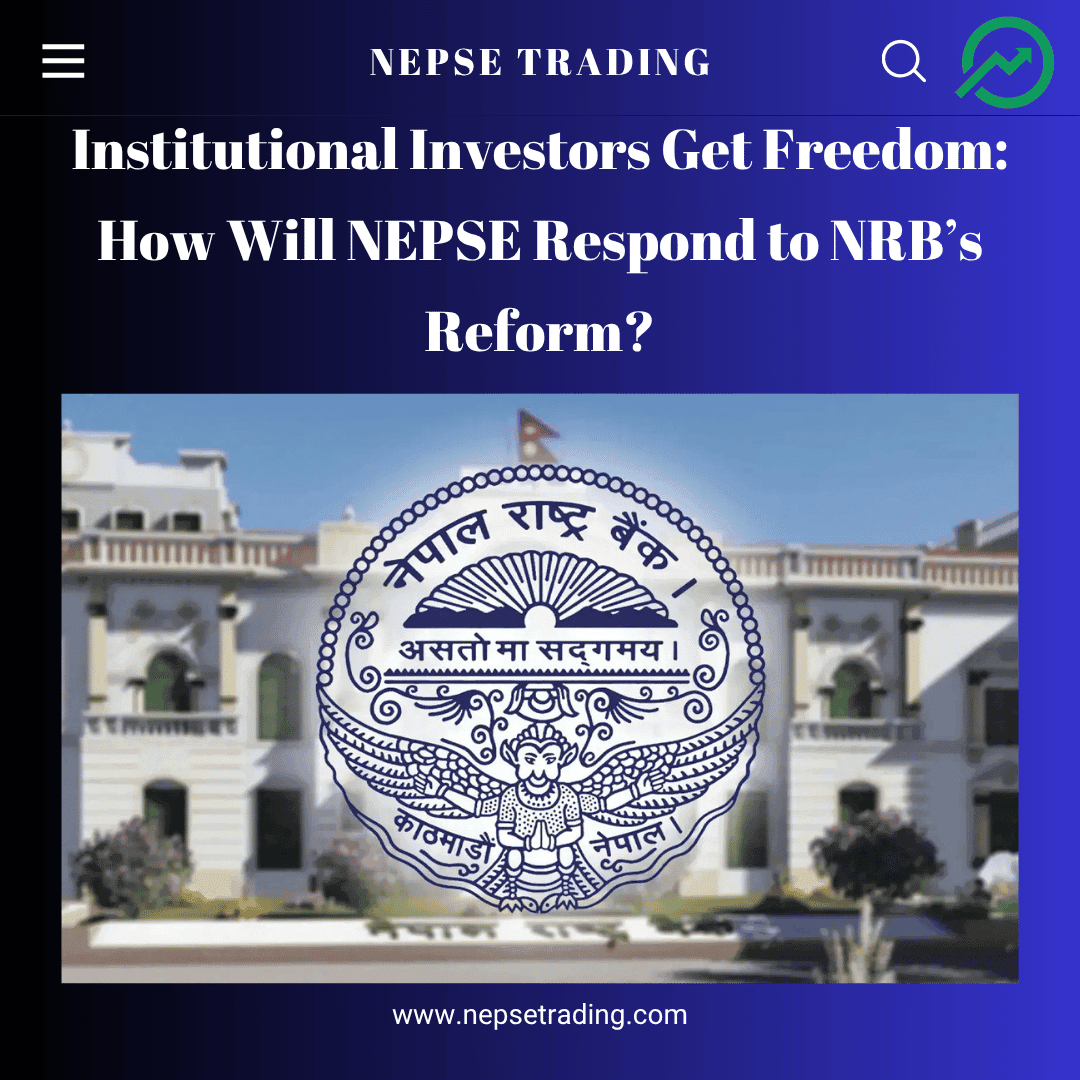By Sandeep Chaudhary
Institutional Investors Get Freedom: How Will NEPSE Respond to NRB’s Reform?

The Nepal Rastra Bank (NRB) has introduced one of the most impactful reforms in recent years, granting greater flexibility and freedom to institutional investors. The central bank’s latest circular reduces the mandatory holding period for banks and financial institutions (BFIs) from one year to six months, removes the 20% annual sale restriction, and eliminates the NPR 25 crore limit on share-backed loans for individuals. This tri-fold policy reform is designed to unlock institutional liquidity, enhance market depth, and strengthen the overall functioning of the Nepali capital market.
For years, institutional investors faced limited flexibility under NRB’s strict rules, which forced them to hold investments for at least a year — even when market conditions demanded a quicker exit. This often suppressed liquidity and discouraged dynamic portfolio management. The new six-month rule now allows institutions to rebalance their portfolios semi-annually, enabling faster responses to market opportunities and risks. Similarly, the removal of the annual 20% sales cap allows banks to adjust holdings more freely, while lifting the margin loan ceiling provides retail and institutional investors with increased purchasing power.
In the short term, NEPSE is expected to experience a surge in turnover and trading volume, as institutions can now enter and exit positions more efficiently. Sectors such as banking, hydropower, and investment holdings are likely to benefit first, since these are the most liquid segments of the market. The newfound freedom is also expected to boost investor sentiment, with many viewing this as a pro-market move that aligns Nepal’s regulations with international norms.
However, experts caution that greater freedom can also lead to heightened speculation and short-term volatility. Easy access to leverage through share-backed loans might encourage aggressive trading, potentially destabilizing the market if not properly monitored. Analysts suggest that SEBON and NRB must strengthen surveillance and enforce prudential lending practices to prevent systemic risks. Over the long run, if properly implemented, these reforms could transform NEPSE into a more vibrant, institutionally-driven market capable of sustaining higher volumes and deeper liquidity.
In essence, NRB’s reforms have opened a new chapter for Nepal’s capital market. Institutional investors now enjoy the autonomy they long demanded — but with freedom comes responsibility. Whether NEPSE responds with sustainable growth or speculative swings will depend on how wisely this flexibility is used in the coming weeks.









